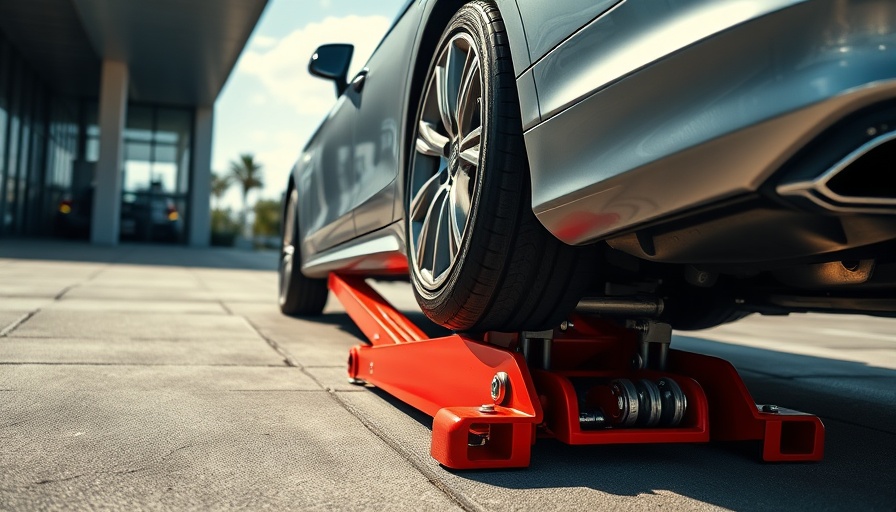
Understanding the Right Car Jack for Your Needs
Choosing the right car jack is crucial for ensuring safe and effective vehicle maintenance, particularly for California homeowners who enjoy DIY car repairs. The importance of having a reliable jack cannot be overstated—using the wrong type can lead to dangerous situations. For instance, when changing tires on the side of the road, the stability and load capacity of a jack are paramount. Selecting from scissor jacks, bottle jacks, and hydraulic floor jacks can save you time and, more importantly, keep you safe.
Types of Car Jacks: An In-Depth Look
1. Scissor Jack
The scissor jack is often included with your vehicle as a basic tool for roadside emergencies. It operates by a simple hand-crank mechanism, allowing it to fit easily in your trunk. However, they are not the best for extensive repairs due to their limited stability and low height range. While they are affordable and portable, safety precautions should be adhered to strictly. Never attempt to work under a car supported solely by this jack.
2. Bottle Jack
Bottle jacks are hydraulic and have a higher weight capacity, making them suitable for larger vehicles. They are compact and easy to use, but their small base can be a drawback as they may sink into soft ground. Always place the jack on a stable surface to avoid accidents. A helpful tip for emergency situations is to keep a piece of plywood handy in your trunk to provide a solid base.
3. Rolling/Hydraulic Floor Jack
Floor jacks, which typically use hydraulic power, are favored in garages and workshops for their ease of use and stability. They allow for better access under the vehicle, making them ideal for maintenance beyond tire changes. Their robust build can support a wide range of vehicles and unlike bottle jacks, they typically have a larger surface area for support.
Choosing Based on Vehicle Type and Purpose
The type of car jack you choose should depend on your vehicle and the kind of work you intend to do. For lighter vehicles, a scissor jack might suffice, but for trucks or SUVs, a bottle jack or rolling/jack may be the better option. Being prepared and equipped is critical, especially in California where road conditions can vary greatly across urban and rural settings.
Safety First: Best Practices for Using Car Jacks
Regardless of the jack type, safety should always come first. Always use jack stands in tandem when lifting a vehicle as a precaution. Proper training on how to install and use a jack can further protect mechanicians from accidents, which are unfortunately common when safety protocols are ignored. Utilize clear instructions and stay informed about weight limits and handling requirements.
More Than Just a Jack: Understanding Load Limits
Each car jack has specific load limits. Exceeding these limits can result in accidents, injury, or damage to your vehicle. Always check the manufacturer's specifications to ensure that the jack you choose can handle your vehicle’s weight efficiently. Regular maintenance and inspections can also increase the durability and reliability of your car jack.
Making the Smart Purchase
Investing in a quality car jack may save you money in the long run by avoiding injuries and vehicle damage. Evaluate your needs based on your car model and how often you plan to perform maintenance. Understanding your options equips you to make a smart purchase, and can also enhance your confidence in tackling car repair tasks.
In summary, the right car jack not only enhances your DIY capabilities but also ensures safety while working on your vehicle. Make sure to explore your options carefully and consider investing in reliable equipment tailored to your needs.
 Add Row
Add Row  Add
Add 




Write A Comment